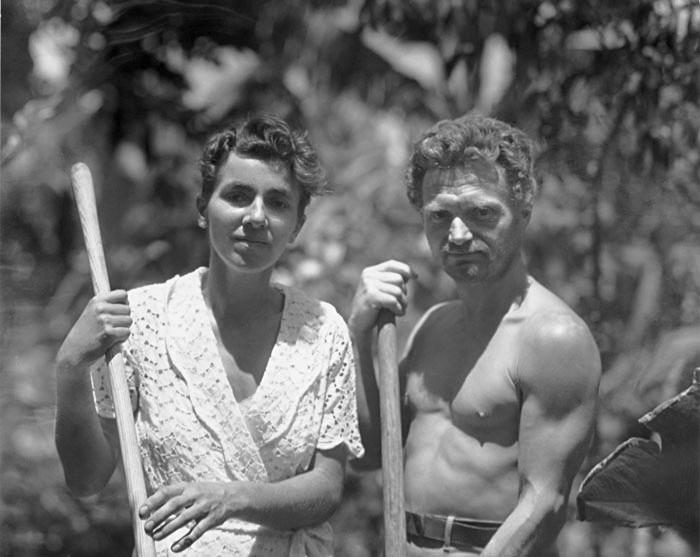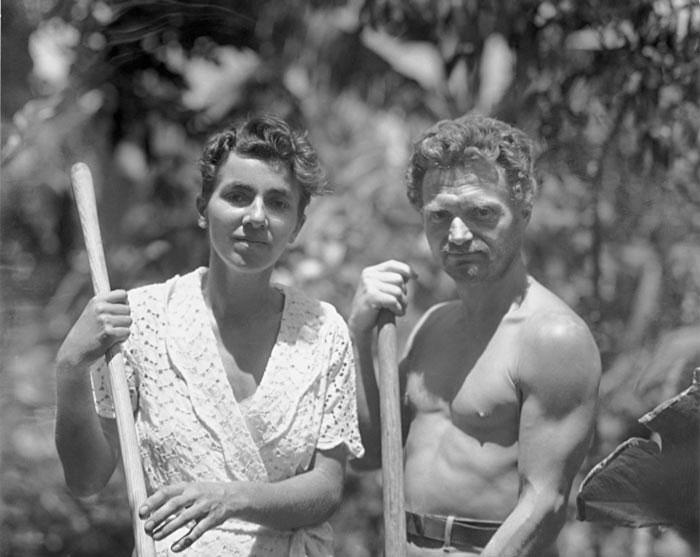What started as a journey to an uninhabited island in the Galapagos quickly turned into an adventure with rival parties, mystery and murder. In the documentary “The Galapagos Affair: Satan Came to Eden,” filmmakers Dan Geller and Dayna Goldfine explore the fascinating human history of three groups of people on the Galapagos island of Floreana, with a twist of a delicious whodunit mystery.
“In 1998 we were shooting and doing sound for a friend on a science [Darwin] project that took us to Galapagos, which was a fantastic opportunity,” Geller told the STAR. “But neither Dayna nor I had a clue that there were any people down there at all. We just thought it was tortoises, iguanas, some finches, and no humans.”
After Goldfine started reading a book on their motorsailer about the human history of the Galapagos and got to a chapter titled “Murder in Paradise,” she was hooked and the seeds of the project were planted.
It wasn’t until years later through lots of coincidences, a recently found archive of film footage of the island’s inhabitants and memoirs from some of the people who were there at the time when Geller and Goldfine actually got into production on the movie.
In 1929, Dr. Friedrich Ritter and his lover Dore Strauch fled from their lives and families in Germany for isolation in paradise to start anew. They would live off the land in their own private Garden of Eden while Ritter worked on his Nietzsche-inspired philosophy, hoping to one day be published.
When word spread around the world of Geller and Goldfine’s decision to abandon civilization, more people started to arrive to the island.
In 1931, Heinz and Margaret Wittmer, with their 14-year-old son Harry, arrived on the island, much to the distain of Ritter and Strauch. The couple found it an invasion of their seclusion, and wanted nothing to do with the newcomers.
A few months after the Wittmers, Baroness Eloise von Wagner and her two lovers Robert Philippson and Rudolf Lorenz arrived on the island. The Baroness had an ulterior motive to set up a hotel to attract millionaires, instead of playing “Robinson Crusoe” like the rest of the inhabitants.
The Baroness was a force to be reckoned with, for while the Wittmers, Ritter and Strauch wanted nothing to do with her, she was still a big threat as to who really controlled the island. She always carried a revolver with her, was constantly accompanied by her armed lovers and did her best at attracting government officials and nearby millionaires to garner interest in her plans of a hotel.
The dynamic between these three groups of people on the island of Floreana was a powder keg just waiting to explode, with someone from each group capable of lighting the fuse. It’s not until the disappearance of the Baroness and her lover Philippson when the documentary becomes a game of “Clue,” with the filmmakers giving the viewer all the evidence of who could have been behind the suspected murder of the Baroness.
“The Galapagos Affair” is a combination of old footage of the island’s inhabitants taken by themselves and Captain Hancock’s team of the research vessel the Velero III, as well as present day interviews with residents of the nearby Santa Cruz Island and surviving family members of the protagonists.
The filmmakers found out about the Captain Hancock archives at USC around 2001 but had to sit on it because they were in the process of producing their other project “Ballets Russes.” “Later we got in touch with Melinda Hayes who is the archivist at the Doheny Library and we went down and sort of eye-balled what was sitting there and it was unclear initially if the footage could be salvaged at all, it was quite old, it smelled like vinegar,” said Goldfine.
Because of the tremendous voice casting, the characters really came to life thanks to actors like Thomas Kretschmann, Josh Radnor, Diane Kruger and Cate Blanchett.
“We knew we wanted Cate Blanchett early on to do a role, any role. She’s just a genius of an actor, and it turned out we had a colleague in common, so we could begin to discuss with each other a possibility,” said Geller. “And when she ultimately said that she would be happy to do any role, we thought she’d be perfect for the Dora Strause role because in some ways it’s the heart and soul of the movie and we knew she’d just run with [it].”
Once they had Blanchett on board, the casting director started suggesting people and they knew they wanted for the German characters actors who really were native German speakers rather than people who would put on an accent.
“The Galapagos Affair” is a truly remarkable film, telling the story of true-crime, scandal and mystery that was once known only to the Galapagos residents. The documentary shocks and intrigues in a way only Alfred Hitchcock could, leaving audiences craving for more.
The film is currently showing at the Rialto Cinemas in Sebastopol. For more information on the film, filmmakers, or what books to read on the subject, visit www.galapagosaffair.com.





![[Both photos courtesy of sonoma.edu]
Ming-Ting Mike Lee stepped in as the new SSU president following Sakakis resignation in July 2022](https://sonomastatestar.com/wp-content/uploads/2024/04/CC4520AB-22A7-41B2-9F6F-2A2D5F76A28C-1200x1200.jpeg)



























